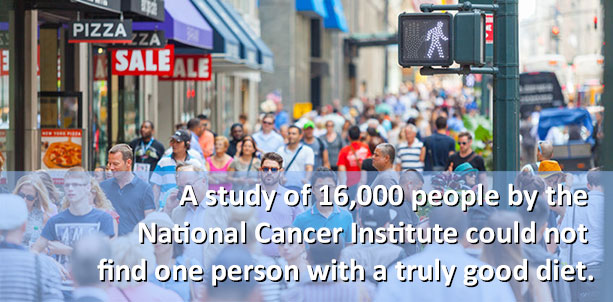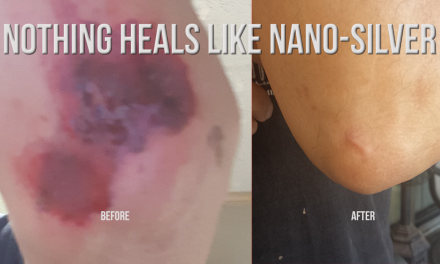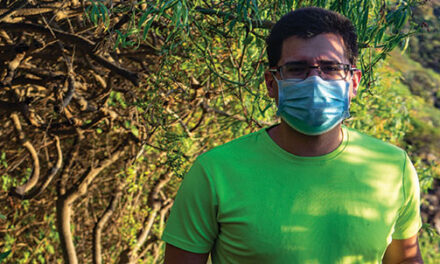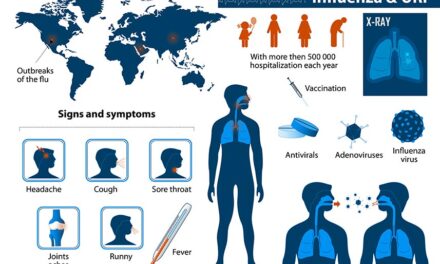As fears about the COVID-19 virus continue to increase, there are more discussions about how the human immune system functions and whether natural strategies, such as vitamin C, vitamin D and colloidal silver are actually effective. The following explanation of science between these natural prevention and treatment approaches may help to clarify this discussion.
A. Generally Speaking
Our immune system has evolved over millions of years to successfully defend our cells against all manner of invading microbes, including bacteria, viruses and other pathogens. An important aspect of this defense mechanism is the food we eat. With the first priority being the elimination of these “germs,” or invaders, with certain nutrients that support our immune system. Dr. Bruce Ames established a three-level priority system that ensures we are protected as long as we consume these nutrients that our body has decided are good for our immunity.
The first problem in this regard is that most people do not eat enough of these important nutrients found primarily in fruits and vegetables. A study of 16,000 people by the National Cancer Institute could not find one person with a truly good diet. In fact, most people were deficient in 11 out of 14 nutritional categories. When people say they eat a pretty healthy diet, this is simply not true.
This deficiency becomes more serious when we consider that our nutritional needs increase under certain situations such as:
- Pregnancy
- Stress
- Exercise
- Injuries
- Operations
- Prescription drug use
- Colds/Flu
- Toxins
- Chronic illness
- Alcohol use
- Tobacco use
- Natural loss
This is precisely why chronic illness has increased by over 600 percent in the past 60 years, from 10 to 70 percent of the adult population. It is also why life expectancy will decline for the first time in human history for people born in the year 2000 or later. (New science is now suggesting that this could occur with people born after the year 1980).
The current COVID-19 outbreak can help to sharpen the focus on this nutritional crisis.
B. Three natural strategies for the COVID-19 virus are Vitamin C, Vitamin D and Nanoparticle Silver
1. Vitamin C—The science behind vitamin C began in 1912 when it was discovered. Then, in 1928, it was isolated, and in 1933 it became the first vitamin to be produced chemically. Albert Szent-Gyorgyi discovered ascorbic acid at that time and Linus Pauling became the champion of vitamin C in the 1950’s and beyond. James Lind, a Scottish Naval surgeon, found that citrus fruit prevented scurvy in the 1700’s, so some credit must also be given to him.
Most recently, the Shanghai Government announced that vitamin C is an effective treatment for the COVID-19 virus. Dr. Andrew Saul has found that high doses of vitamin C can also be an effective treatment for a high range of viral infections. Very little has been reported in the main stream media on exactly how this protection happens in our body.
Vitamin C is an antioxidant, which means it has an extra electron to give to toxins and germs in our body that are missing an electron, known as free radical damage. However, viruses are not free radical molecules, they are fragments that are smaller than bacteria and can only survive when they attach to one of our cells. They can then multiply and begin to overwhelm and damage key organs, especially our lungs. However, vitamin C can prevent this damage in the following way:
- Our body’s immune system uses phagocytes, such as white blood cells to capture and engulf harmful microorganisms, such as bacteria and viruses.
- Vitamin C is needed by white blood cells as 50 times the level usually found in our blood stream. Our bodies do not make vitamin C, although there are some theories that indicate they used to make it. We can only get this level of 50 times by consuming vitamin C from foods and supplements. Vitamin C is being moved into our white blood cells continuously to ensure a strong immune response when needed.
- Sugar and vitamin C have a similar chemical structure, which causes sugar to get into the white blood cells by mistake. If the concentration of glucose/sugar in our blood reaches the level of 120 mg/dl, that means white blood cells are filled with too much sugar, instead of vitamin C. This causes a reduced immune response of up to 75 percent for 4–6 hours.
- Vitamin C is a water-soluble vitamin and moves out of the body within four hours. Therefore, more vitamin C must be consumed, and properly absorbed, in order to build the 50 times concentration needed in our white blood cells.
- If the viral or bacteria challenge is more serious, such as the COVID-19 virus, this replacement process may need to be done sooner, such as every two hours.
- Intravenous infusions of vitamin C can help to improve concentration levels, however, even the IV approach must be repeated in order to create a sustained immune response.
- White blood concentrations of 50 times normal levels from food and supplements can be accomplished by gradually increasing supplement levels from 2,000 mg daily (500 mg every four hours) to 10,000 mg or more daily (1,000 mg every two hours).
- Vitamin C supplements should contain bioflavonoids because this is how the body recognizes it when it is found in fruits and vegetables. In fact, it helps to take vitamin C supplements with the foods they come from in order to ensure that other co-factors can also help in the absorption process.
By increasing vitamin C levels to 50,000 mg to 150,000 mg daily with the proven co-factors, less sugar and the right foods, there is now mounting scientific evidence that vitamin C is effective against all viruses, as well as many cancers.
Ref #1 In one study, asymptomatic adults with the flu were given 1000 mg of vitamin C on an hourly basis for six hours, they then received 1000 mg three times daily until their symptoms stopped. Their flu symptoms were reduced by 85 percent compared to a placebo group. Life Extension, “Disease Prevention and Treatment,” 2013, pages 825–6.
Ref #2 Based on 30 clinical studies on vitamin C treatment for viruses, such as SARS, Bird flu and Swine flu, the effective dosage of vitamin C can range from 10,000 mg daily to over 100,000 mg daily, primarily via IV treatments. “Coronavirus: Exploring Effective Nutritional Treatments.” Andrew W. Saul, Orthomolecular News Service; January 30, 2020.
2. Vitamin D3
Vitamin D3 is proven to have anti-viral capabilities. Our bodies can make Vitamin D3 by way of exposure to the ultraviolet rays of the sun, which helps to convert cholesterol into vitamin D. The body can make as much as 20,000 IU of vitamin D with exposure to sizable sections of our skin. However, there is also the risk of overexposure to the sun, resulting in skin damage, and even skin cancer. In the northern climate zones, it is often very difficult to get enough sunshine to produce sufficient levels of vitamin D3.
Vitamin D can also be found in many foods, such as salmon, herring, sardines, cod liver oil, eggs and dairy products. For people who eat vitamin D rich foods on a regular basis and have some exposure to the sun, it makes it possible to achieve sufficient blood levels of vitamin D in order to protect our body from the flu, as well as many other chronic illnesses, including cancer. The effective level of vitamin D3, based on hundreds of scientific studies, is 50–90 ng/ml. Based on these blood test levels, about 90 percent of the US population is deficient in vitamin D3. (Dr. Joseph Mercola, “Top 5 signs of Vitamin D deficiency,” Jan 01, 2019).
This level of deficiency is extremely dangerous since vitamin D helps to regular over 2000 of our genes related to chronic illness. Over 80 percent of all genetic material consists of on and off switches for disease, including viral infections and cancer. When people have sufficient levels of vitamin D3 in their blood, the risks of contracting many cancers, including breast cancer and prostate cancer, are lowered by 70–80 percent.
Vitamin D3 also exerts a direct influence on our immune system by helping to produce an antibiotic protein called cathelicidin, which is known to kill viruses, bacteria, fungi and parasites. Some studies have reported significant prevention benefits by consuming only 1200 IU of vitamin D3 daily. Dr. John Cunnel recommends taking 50,000 IU daily for the first five days after initial viral infection symptoms occur, and 5,000- 10,000 IU daily as a maintenance dose.
Ref #1 In one double-blind placebo controlled study, the treatment group consumed 2,000 IU of vitamin D3 during the cold and flu season, while the control group consumed a placebo. The vitamin D3 group had a 58 percent reduced risk of the flu. Vitamin D3 helps fend off flu, asthma attacks—American Journal of Clinical Nutrition, March 10, 2010.
Ref #2 In another placebo-controlled study, school children were given 1200 IU of vitamin D3 daily and experienced 51 percent reduced flu occurrence compared to the control group. Life Extension “Disease Prevention and Treatment,” 2013 page 825.
Why did vitamin D3 not work for 100 percent of the people? The following explanation may help to explain this:
- Some participants in the vitamin D3 group may have eaten a less healthy diet, including more sugar.
- Some vitamin D3 group members may have had absorption difficulties related to genetic or biochemical challenges.
- Some vitamin D3 group participants may have had less exposure to the sun.
3. Silver
The history of silver’s use over thousands of years is well documented.
- Hippocrates (460 BC) the Father of Western Medicine, used silver to heal wounds and control infections.
- Herodotus (484 BC) describes how the King of Persia used silver to prevent illness.
- Alexander I of Russia used silver lined drinking vessels to sanitize water during the Napoleon Wars.
- Paracelsus (1493) “Father of Toxicology” used silver as medicine.
- Raulin (1869) observed that Aspergillus niger would not grow in silver vessels. (Aspergillus niger is black fungus/black mold)
- Dr. William Halsted, Chief Surgeon, John’s Hopkins Medical School (1880’s) used silver in operations and infectious wounds.
- Henry Brooks (1910) found that colloidal silver killed germs.
- GA Kruise (1928) used silver to disinfect water in swimming pools.
- 1900—1940 silver was the main antibiotic used in medicine.
- Dr. Larry C. Ford, UCLA Medical School, (1986) studied 650 pathogens and found they were all killed when exposed to colloidal silver.
- Currently many hospitals use silver to treat infected cuts and wounds, as well as bacterial infections known as the wasting disease.
About 80 years ago, antibiotics (man-made) were discovered and began to take the place of silver. This approach has been effective for many decades. However, bacteria have been gradually mutating to build resistance to these synthetic antibiotics. Each year at least two million people in the United States become infected with bacteria that are resistant to antibiotics, causing over 23,000 deaths. Silver is now coming to the rescue in this battle against the so called “super bugs.”1
Ref #1 In a study published in 2013 (Collins, et al. 2013, Boston University) it was found that combining silver with antibiotics made the antibiotics 1,000 times more sensitive and effective.
Silver has a wide spectrum of impact to kill pathogens, bacteria, viruses, fungi and parasites.
- Silver is missing a single electron in the outer shell. When it comes into contact with any pathogen, it will steal an electron, which ruptures the pathogen’s cell membrane, causing death. This mechanism of action allows silver to avoid the resistance experienced by man-made antibiotics.
- Silver also suffocates a virus, preventing access to oxygen, which the virus needs to stay alive. Silver also bonds to the DNA of the virus, thus preventing it from multiplying.
A special form of silver, known as Nanoparticle Silver has proven to be even more effective than other types traditionally used.
Ref #2 “Silver Kills Viruses,” Journal of Nanotechnology, October 18, 2009. University of Texas and University of Mexico.
C. Guidelines for the use of supplements
The three nutritional supplements featured in this article on the prevention and treatment of viral infections, including the COVID-19 virus, are not the only supplements needed by our immune system. There are several more that are also important. A few more of the key ones will be added now to help ensure the optimization of the supplements already mentioned.
1. Zinc—One of the first symptoms experienced by most people with the COVID-19 virus is throat irritation accompanied by a cough. Zinc lozenges can be very effective at killing the virus at this stage, because it has not yet begun to multiple very quickly. Zinc is an antioxidant with proven ability to weaken bacteria and viruses. Sometimes these lozenges include vitamin C and elderberry, which also have antiviral effectiveness.
2. Time to act—At this early stage of the infection, it doesn’t matter which bacteria or virus is involved, it is time to introduce the three products mentioned in this article. If vitamin C, vitamin D, and silver can be introduced early enough they will push the pathogen back and give our immune system a change to identify the invader and create the appropriate immune response.
3. Key foods to add—As was previously mentioned, any supplement works better if it is taken with the foods that it comes from. In the case of vitamins C and D this includes fruits, vegetables and omega 3 fish. These foods have co-factors that help to increase the absorption of the supplements.
4. Chewing our food—Many people do not chew their food good enough, which can cause a serious loss in the nutrients that are created and used by the body. Chewing helps to make the food particles smaller and easier to digest in the stomach and the small intestines. Chewing also causes the release of amylase enzymes, which are needed to begin the digestion process. Many foods should be chewed 20–30 times until they are nearly liquid. Poor chewing can cause the loss of up to 50 percent of the nutrients.
5. Age related nutritional changes—As we age our bodies are programmed to help us to eventually die to make way for the next generation, By the time we are fifty years old our bodies are making 50 percent less digestive enzymes, 50 percent less stomach acid, 50 percent less probiotics and 50 percent less glutathione, our bodies primary antioxidant. Supplementing with these ‘nutrients’ can help to delay this aspect of our aging process, and improve our immune function.
6. The problem with sugar—When we consume too much sugar our immune system is weakened by up to 75 percent for 4–6 hours. Sugar includes added sugar, fruit sugar, simple carbohydrates and alcohol. When fasting glucose levels exceed 85 mg/dl this immune impact begins to occur. When levels reach 129 mg/dl white blood cells are filled with sugar and the immune system is seriously challenged. The ideal sugar intake is no added sugar from pastries or other prepared foods, less than two fruits a day and no alcohol.
7. The rotation factor—Bacteria and viruses seem to have the ability to adapt quickly to whatever is trying to kill it. It can mutate its DBA, and its surface to resist both natural and man-made molecules. Therefore, it helps to rotate the natural products every few hours to confuse the invader and make each strategy more effective. This strategy has helped to keep many people free of colds and flus for over 40 years.
D. Conclusion
When the conventional medical community says that natural strategies to prevent and treat viral infections do not have good scientific evidence, I don’t think they are looking at all of the evidence that is available. Only two references were provided for each of the three natural products mentioned. However, the medical literature has over 500 references for these three evidence-based strategies. The reader can draw his or her own conclusions about why this science is being avoided.











